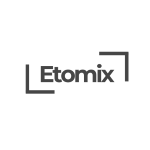
Why Does Your Business Need Strong Procurement Data Management?
The way businesses buy things is getting increasingly sophisticated as they look for products and services. They procure goods and services from external suppliers in order to meet their needs. However, the procurement process has also undergone significant evolution to keep pace with these changes. It is where effective management of procurement data is essential for making informed decisions, maintaining accuracy and improving efficiency.
Enterprises require a clear strategy that converts data into valuable insights to manage procurement data effectively. This article will provide an overview of procurement data management, its key benefits, and the potential advantages of adopting digital tools in your business. That is why it is important to manage the data we collect when we are buying things, so we can make:
- Better decisions
- Be more accurate
- Work more efficiently
But if you want to manage your procurement data effectively, then you need a solid strategy. In this post, we will look at the different parts of an effective procurement data management system. So let’s get started.
What Is Procurement Data Management?
Procurement data management is the process of collecting and organising information about buying goods or services. A procurement strategy is more than just listing spending data; the goal is to make better decisions with more insight.
The goal is to simplify procurement cost analysis activities and ensure accuracy in informed decision-making.
Key Components of Procurement Data Management:
- Data Collection
- Data Storage
- Data Analysis
- Data Governance
Analysing procurement spending data helps organisations to identify areas of overspending, consolidate suppliers, and negotiate better contracts. It also facilitates other aspects of the procurement process, such as supplier management, automation, and risk management.
Defining the Procurement Process Work
You can better understand procurement performance metrics when you break the process into key steps. Modern procurement is a complex operation that includes several stages, and here is a simple explanation of how it works:
1. Identifying Requirements
The process starts when the organisation decides what it needs. This involves assessing what it must source from outside suppliers.
2. Planning and Setting Budgets
After identifying the requirements, a plan is created that outlines the budget and timeline. These steps help in deciding which vendors are suitable and how long it may take to get the goods or services.
3. Researching and Evaluating Suppliers
Organisations then search for reliable suppliers who meet their needs. This step includes reviewing the performance and reputation of potential vendors. Supplier validation makes sure that companies only work with trusted providers who meet their standards.
4. Negotiating and Formalizing Contracts
After selecting a supplier, the organisation negotiates the terms of the agreement. These discussions involve pricing and delivery schedules to make sure both parties are satisfied. A contract is signed once everything is agreed upon.
5. Building and Maintaining Supplier Relationships
After the contract is finalised, it is important to keep the relationship with the supplier strong. This involves clear communication and regular checks to address any problems quickly and maintain a smooth collaboration.
6. Ensuring Quality Control
Organisations check to make sure the goods or services provided meet the agreed standards. This step includes regular reviews to find and solve any issues as soon as possible
7. Monitoring Supplier Inventory
If goods or materials are involved, organisations monitor the supplier’s inventory to ensure availability. This helps prevent delays and ensures the goods are delivered on time.
Benefits of Data Management in Procurement
Good data management makes it easier to get materials and services from suppliers. It helps organisations get the best value and reduce risk when dealing with third parties.
Organisations with good procurement data management and best practices can benefit in many ways. These include:
1. Increase efficiency: A data management system makes it quick and easy for organisations to access the info they need when sourcing materials or services from external vendors. This can save time spent researching potential suppliers and cut down on the manual work often needed in traditional procurement processes.
2. Informed Decision-Making: When procurement teams have good and accurate data with them, they can make better decisions. It is where master data management can help standardise and centralise important business data.
Insights into supplier performance help teams to see which suppliers meet quality and service standards. This helps build strong partnerships with reliable vendors and avoid those with a poor track record.
Also, looking at price trends helps procurement teams buy at the right time. They can then make the most of good prices and cut costs.
Access to past data helps with decision-making. This historical insight also helps to identify inefficiencies like unnecessary spending or duplicate orders that can then be fixed.
3. Save Costs
Good data management helps you cut costs. Organisations can simplify purchasing waste and secure better deals by analysing spending and supplier contracts.
4. Improved Supplier Management:
Data management allows procurement teams to monitor supplier performance closely. This makes sure that the suppliers meet quality standards, delivery timelines, and contractual obligations. It helps to build stronger and more reliable partnerships.
5. Improved Risk Management
Access to comprehensive procurement data helps organisations identify potential risks early. It includes:
- Supply chain disruptions
- Compliance issues
- Unreliable vendors
Addressing these risks reduces the chances of costly mistakes.
6. Simplify the Processes
Automation tools powered by data management systems can simplify procurement workflows. Software, like procurement savings tracking tools, can make it easier to manage purchases. These tools help businesses simplify their processes while keeping an eye on costs and making savings.
7. Better Compliance
Procurement data management ensures that your business adheres to legal and regulatory requirements. It provides a clear audit trail and improves transparency to meet compliance standards and avoid penalties.
8. Increased Operational Efficiency
Centralised and structured procurement data reduces redundancies and improves communication across teams. It leads to smoother operations and faster turnaround times for procurement tasks.
Conclusion
Each step of the procurement process is important as it can help the organisation to achieve its goals. It is essential to know how the procurement lifecycle works to understand procurement data management better.
Procurement is no longer a simple process but a strategic function that drives success to any business. Connect with us if you are looking to get started with procurement cost savings. We can help you achieve measurable cost savings and reduce risks.


